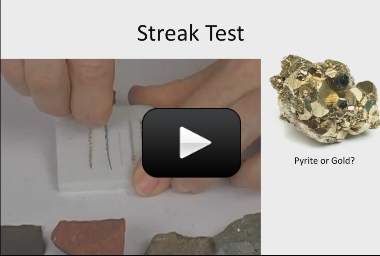This is a recording of a recent live teleclass I did with thousands of kids from all over the world. I've included it here so you can participate and learn, too! Learn about the world of rocks, crystals, gems, fossils, and minerals by moving beyond just looking at pretty stones and really being able to identify, test, and classify samples and specimens you come across using techniques that real field experts use. While most people might think of a rock as being fun to climb or toss into a pond, you will now be able to see the special meaning behind the naturally occurring material that is made out of minerals by understanding how the minerals are joined together, what their crystalline structure is like, and much more.
Materials:
- Geology Field Trip in a Bag
- Worksheet printout
- Unglazed porcelain tile (or the bottom of a coffee mug)
- Paper plate or disposable pie pan
- Microscope slide
- Magnifying glass
- Cup of water
- Steel nail
- Double-sided tape
- Magnet


Officially, sulfur all by itself doesn’t have a smell. But sulfur is often found in compounds called mercaptans. Human scent receptors are particular sensitive to smells that come from mercaptans. This helps us detect danger that comes from rotten food or places with low oxygen (for instance close to volcanic vents). In fact, mercaptans are added to natural gas (which has no odor), so we can smell if there is a gas leak in our house.
Why does sulfur smell so bad?